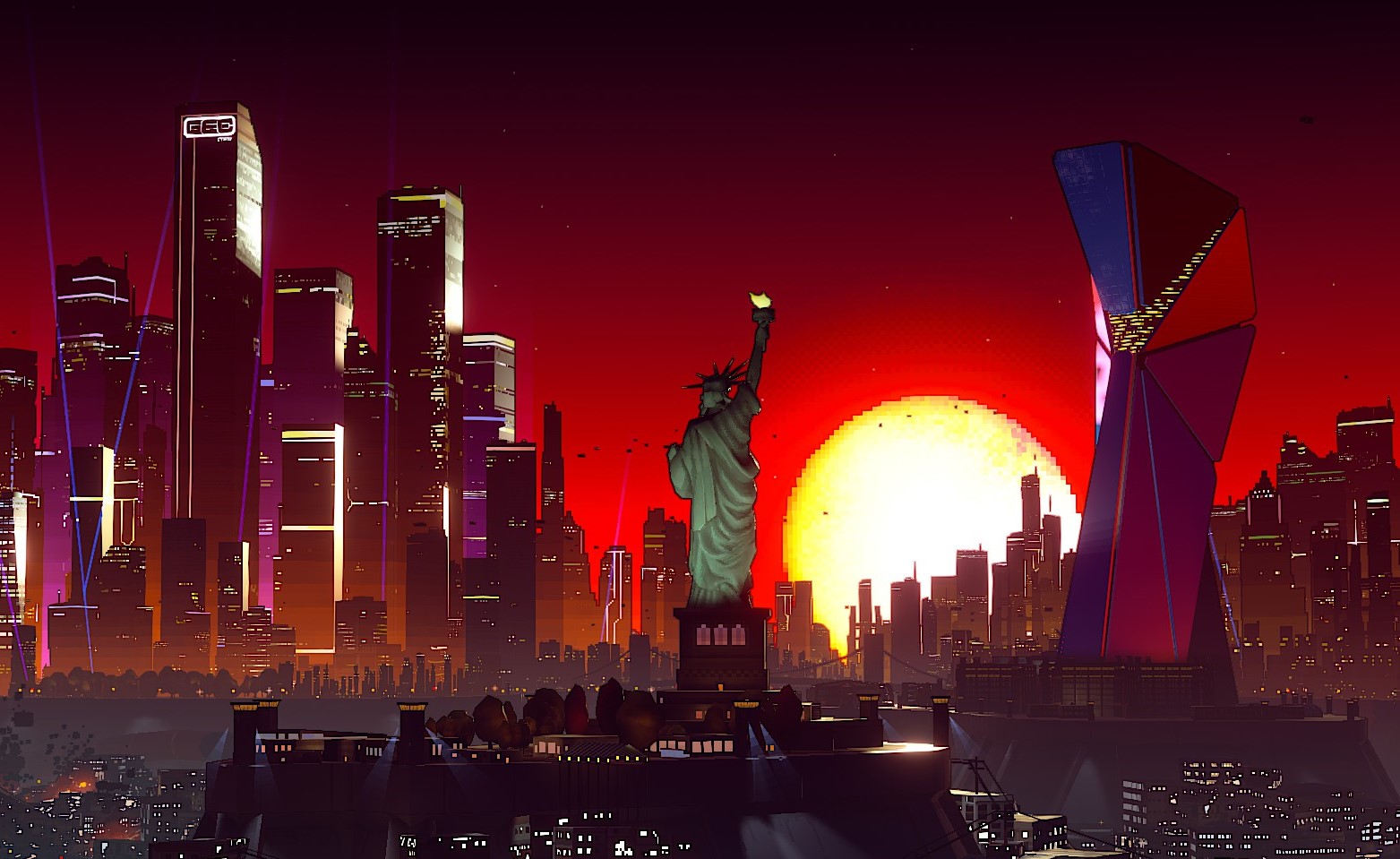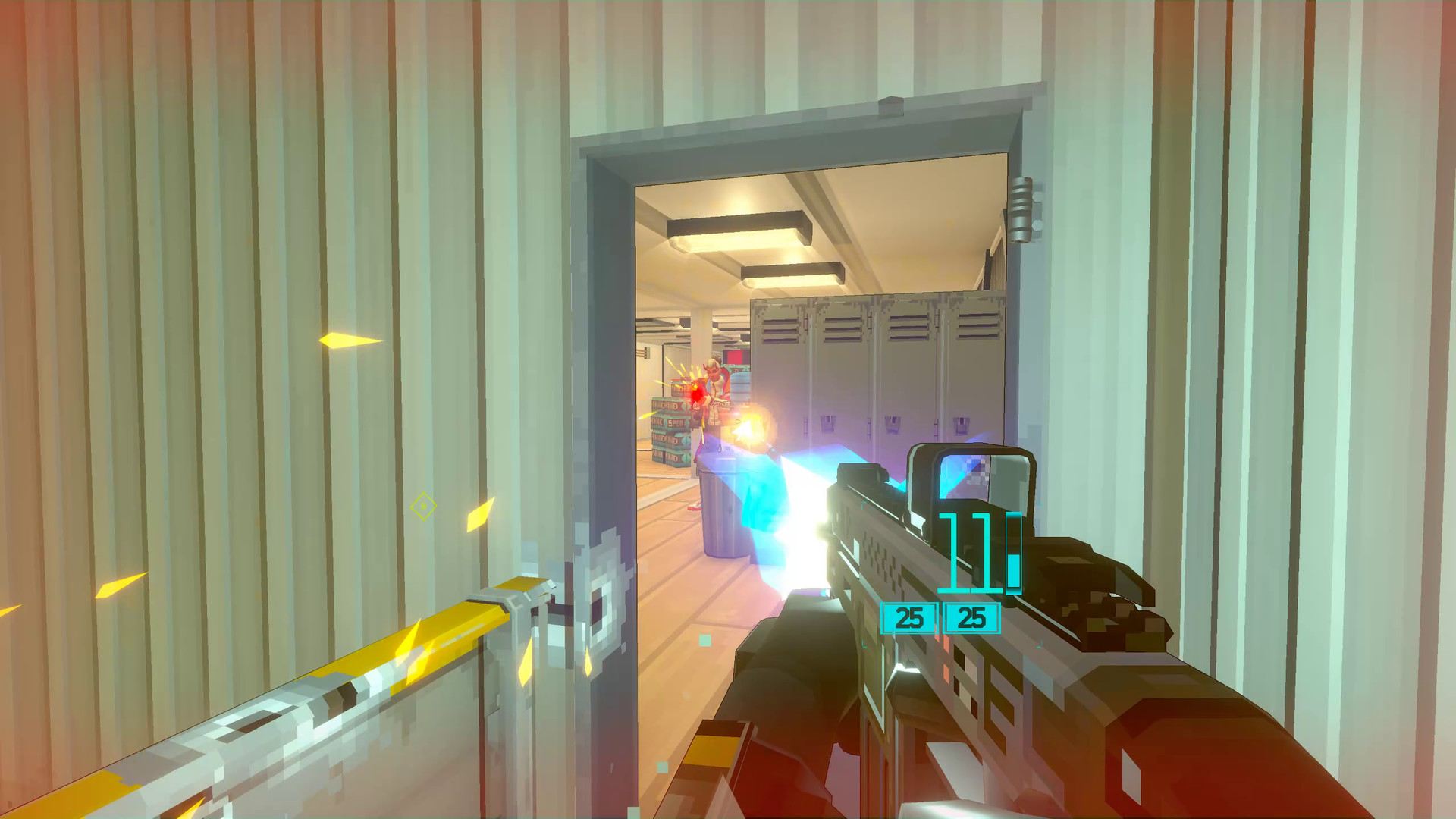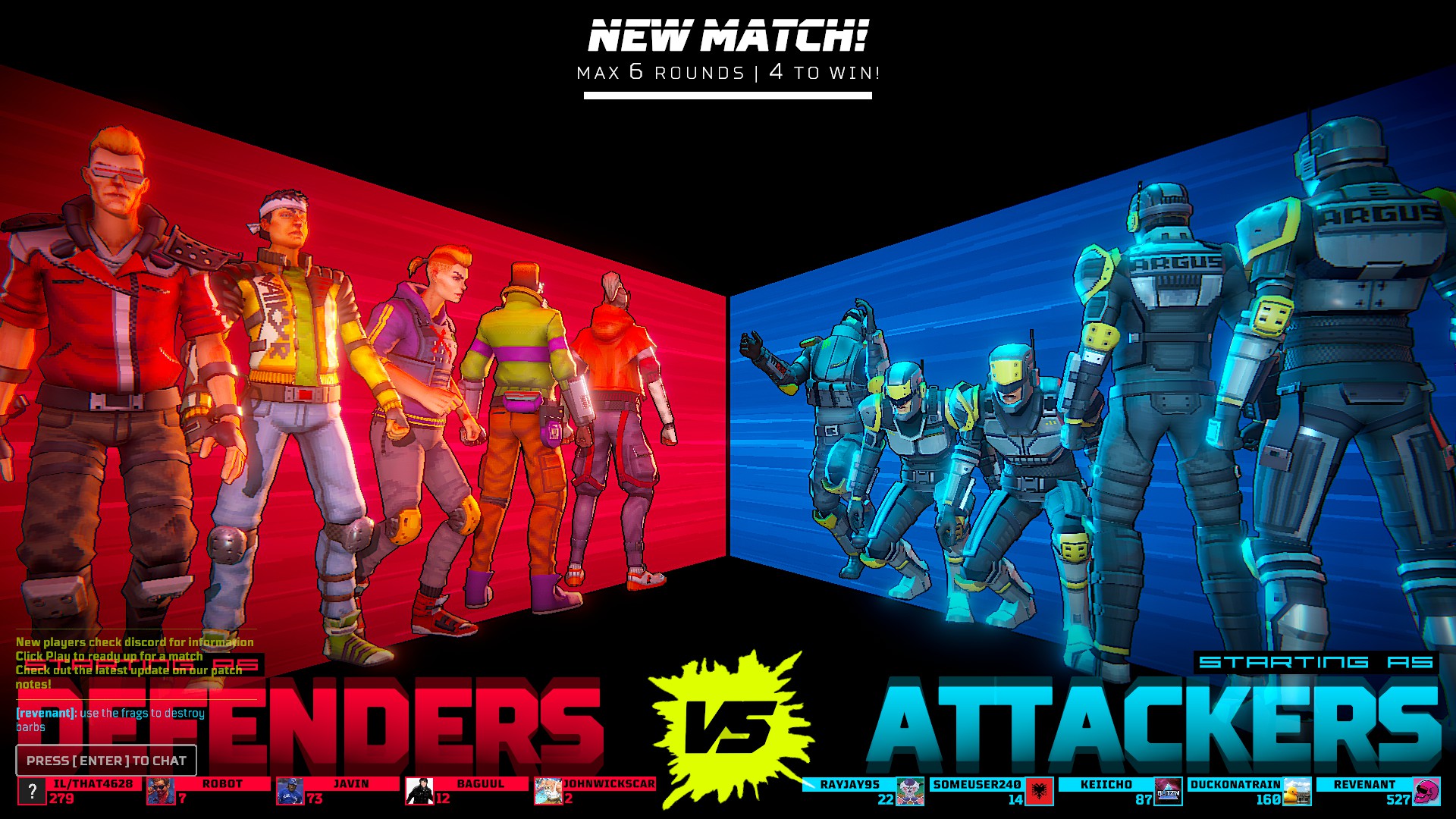Due Process is a procedurally generated Rainbow Six: Siege with visuals to die for
The freshest competitive shooter in years.

Due Process has been in development for many years, and was finally released as an Early Access title earlier this week. The idea is simple: a competitive shooter a la Counter-Strike or Rainbow Six: Siege, but without the crutch of familiar locations. The execution is beautiful.
Each match consists of six rounds which take place over three maps, with teams playing both attackers and defenders at each location. The defending team, some sort of rebel militia, will be indoors and tasked with guarding a bomb. The attackers, corporate Judge Dredds, have to assault the building and defuse the explosive.
Part of Due Process's magic is that, while the basics may sound familiar, their implementation is not. Teams have a shared inventory of weapons and tools across each three-round half, which are lost on death, and the prime kit is extraordinarily limited. If the attackers use multiple door charges in the first round, for example, the defenders know that they won't be able to breach red doors in subsequent rounds.
This creates a great tension around a distinctive weapon set: if you take the boomtastic auto-shotgun as a defender in the first round, and get killed, it's not only a waste but could potentially be used against your team. But a defence that doesn't have the courage to use the gun loses it after that half anyway.
It not only means you end up trying out almost every weapon, because sometimes that SMG is all that's left, but that co-ordination across the team is vital. And that's Due Process in microcosm. If you're not comfortable with voice chat then jog on, because communication is everything.

The reason why is what sets Due Process apart. The game's maps are procedurally generated, and then the best examples are selected and curated by the developers, and released in weekly batches of multiple dozens. I'm not sure how many are already in the game, it's at least in the high hundreds, but the point is that Due Process does not have a Dust 2. Every match's environments are different and, while repetition is obviously possible, in practical terms it feels like you're seeing each map for the first time.
There are shared elements: 'red' doors which can be blown up, 'green' doors that can be accessed, a circuit-breaker that controls the lights, maybe a large exterior fan in one wall. And there are thematic commonalities too, such as rooms with toxic waste, elaborate gantries, glass-fronted shops with operating shutters, arcades and so on.
Keep up to date with the most important stories and the best deals, as picked by the PC Gamer team.
This is the type of shooter where rounds can be absolute massacres, with one team simply mowing down the other. But that never feels like it's down to the maps, so much as a bad plan or a botched entrance. You never 'know' these layouts but there are enough familiar parts that you quickly learn what aspects to hang a particular strategy on, and get comfortable applying general principles to a given configuration.
Using the map never loses its appeal, even after you've watched someone painstakingly doodle a cock for the hundredth time.
These environments combine with some of the best in-game map functionality you'll ever see, an overview of the level which is shared among the team and can be 'drawn' on with the mouse. And what you draw then appears in the environment for your team to see. It's no replacement for voice chat but a wonderful assist, and enables shared planning at the start of a round as well as precise pointers in moments of crisis. Using the map never loses its appeal, even after you've watched someone painstakingly doodle a cock for the hundredth time.
Each round in Due Process begins with a 90-second planning phase, which sounds too long and occasionally feels like it, in which both teams gear up and plan their strategy. The attackers begin in a van outside the building, and have to decide which of various entry points to go for, and how best to approach the bomb room. The defenders start in an interior armoury, and can choose their spawn point within the building come round start.
Then it's on. Death in Due Process is brutal, swift, and a constant. Clumsy footsteps will give away an approach, or perhaps a defender will look out of a window at just the wrong moment. In the last game I played, my attacking team approached the door we were going to breach in silence, placed the charge, and at that second a hail of fire came through from the other side, detonating the explosive and taking out four of us.

The matches themselves are often close, but individual rounds can be utterly lopsided chaos. Each side is designed to be overwhelming in the right scenario. Attackers have one round's worth of night-vision goggles, for example, and can plan to take out the lights which, if managed, forces defenders to either squint through the darkness or turn on their torch and become an obvious target. If you're on defence and this happens, it feels like Aliens.
Similarly, those snazzy visors that the corporate cops are rocking? Not just for show. The attackers have a supply of flashbangs, and the visor means that attackers can't be blinded by them. Tossing a flash and running in as it's popping is soon second nature and when it works, which it frequently does, leaves you feeling like Rambo.
Some levels seem built for abuse of the AWP-like sniper from outside, while others create the kind of twisty bottlenecks where well-placed barbed wire and an auto-shotgun means an easy team wipe. The better teams change plans and improvise: the attackers might overwhelm a weakly-defended door, then camp it and switch focus, or go around as a gang of five bagging isolated rebels.
It probably says everything that I haven't even drooled over the visuals yet, so get your umbrella ready. In a genre that tends towards 'realistic' aesthetics, Due Process goes for vibrancy and an almost garish palette, half old comic book and half anime. The cops' gleaming chrome armour plates and matte grey bodysuits are offset with yellow trimmings that hint of danger, while the scarlet-hued rebels are all fingerless gloves and cyberpunk goggles.
Part of the appeal is the panic and chaos of these moments, the headlong rush into death with all guns blazing
Due Process's most visually stunning moments are during the action. When the firing starts, there are bullets and particle effects everywhere, chunks of scenery flying, incredibly disorienting flash effects, and bodies dropping like rocks. Part of the appeal is the panic and chaos of these moments, the headlong rush into death with all guns blazing, and the breathless incredulity when, every so often, you make it out alive.
Comparing this to Counter-Strike: Global Offensive or Rainbow Six: Siege is perfectly reasonable, but shouldn't be overdone. The guns don't work in quite the way that veterans of those games might expect, nor is the moment-to-moment action particularly close. This game is unique.
There's a great swing in atmosphere across rounds: the planning is thoughtful and organised, then the execution is raw, bloody and frantic chaos. Due Process is bold, gorgeous, and the freshest competitive shooter in a long time.

Rich is a games journalist with 15 years' experience, beginning his career on Edge magazine before working for a wide range of outlets, including Ars Technica, Eurogamer, GamesRadar+, Gamespot, the Guardian, IGN, the New Statesman, Polygon, and Vice. He was the editor of Kotaku UK, the UK arm of Kotaku, for three years before joining PC Gamer. He is the author of a Brief History of Video Games, a full history of the medium, which the Midwest Book Review described as "[a] must-read for serious minded game historians and curious video game connoisseurs alike."

